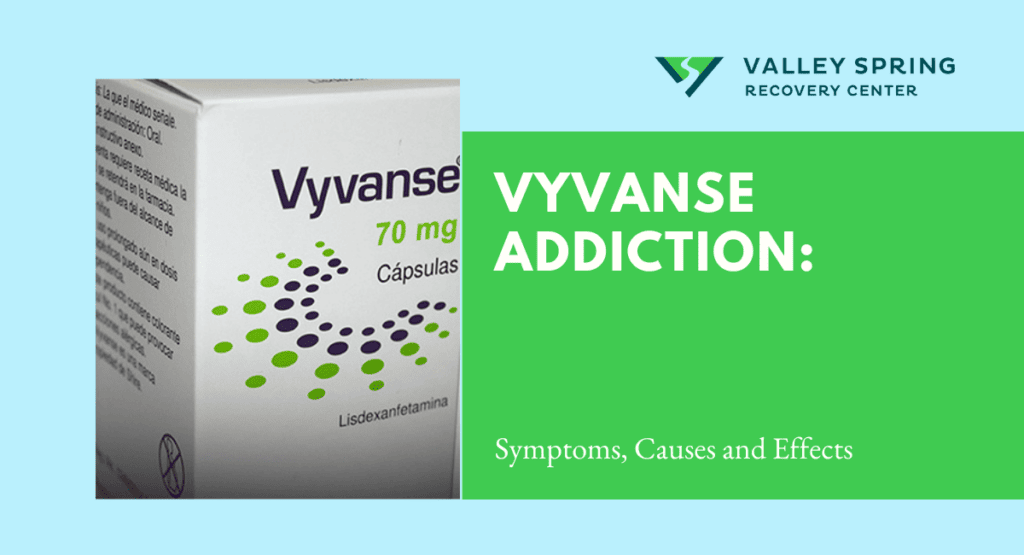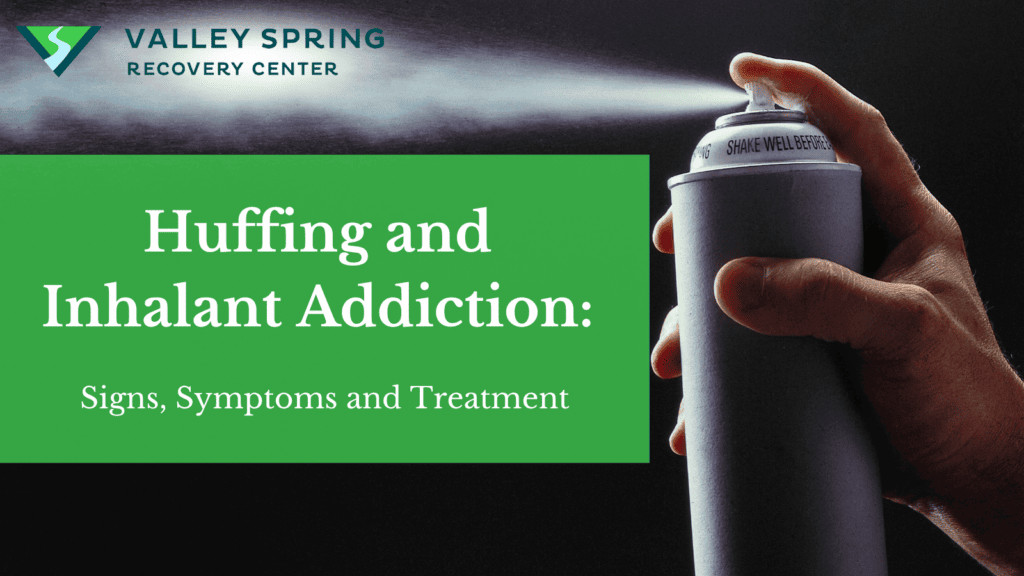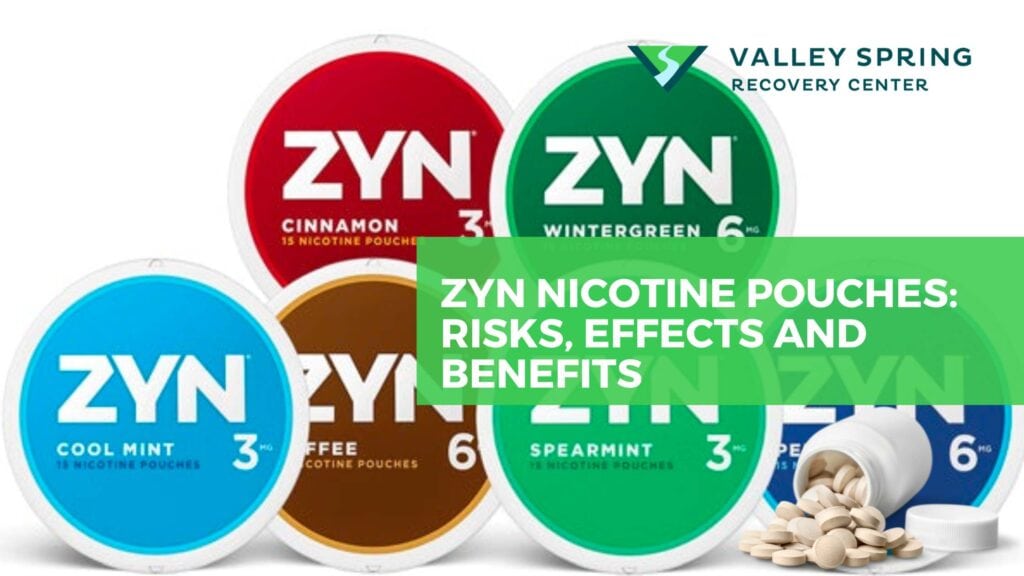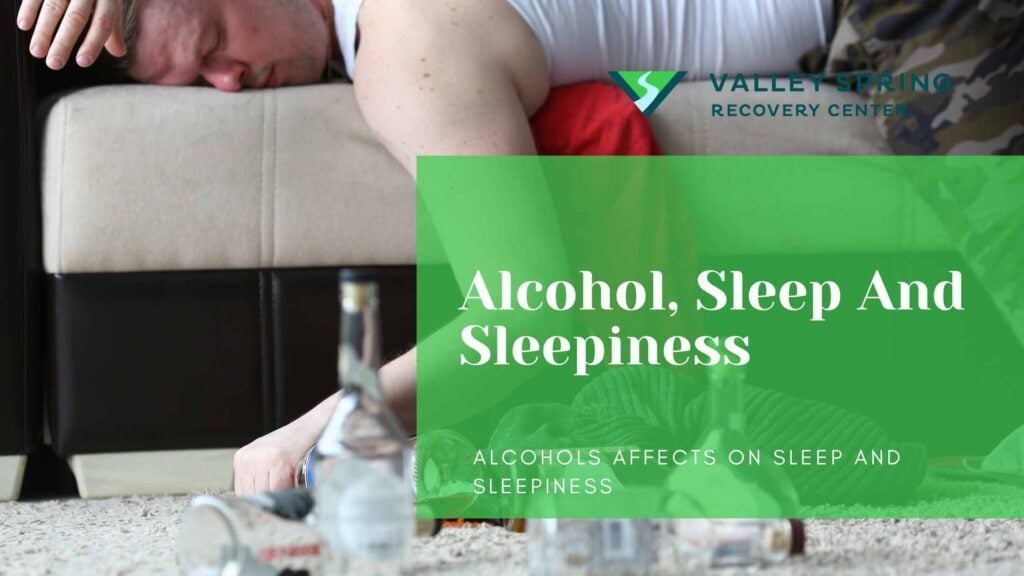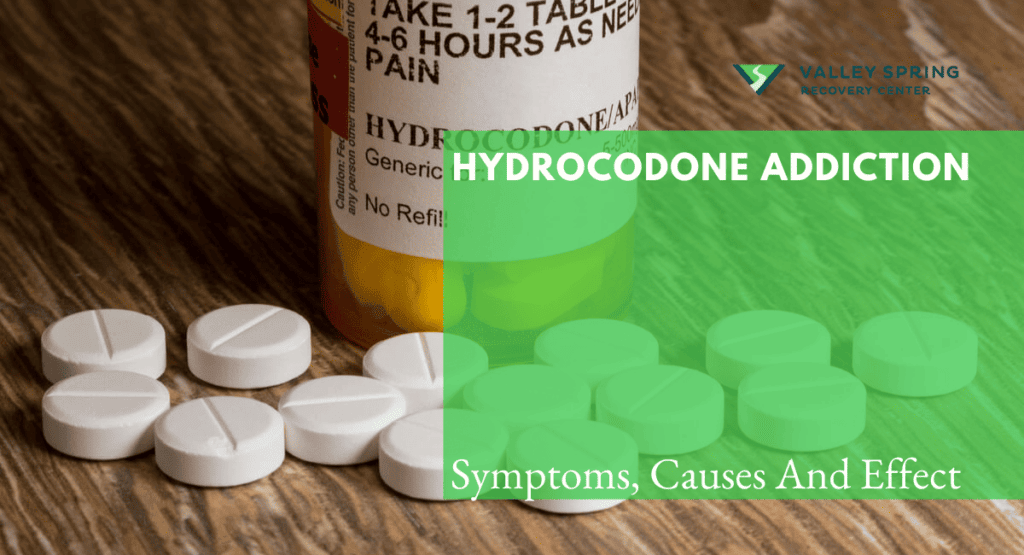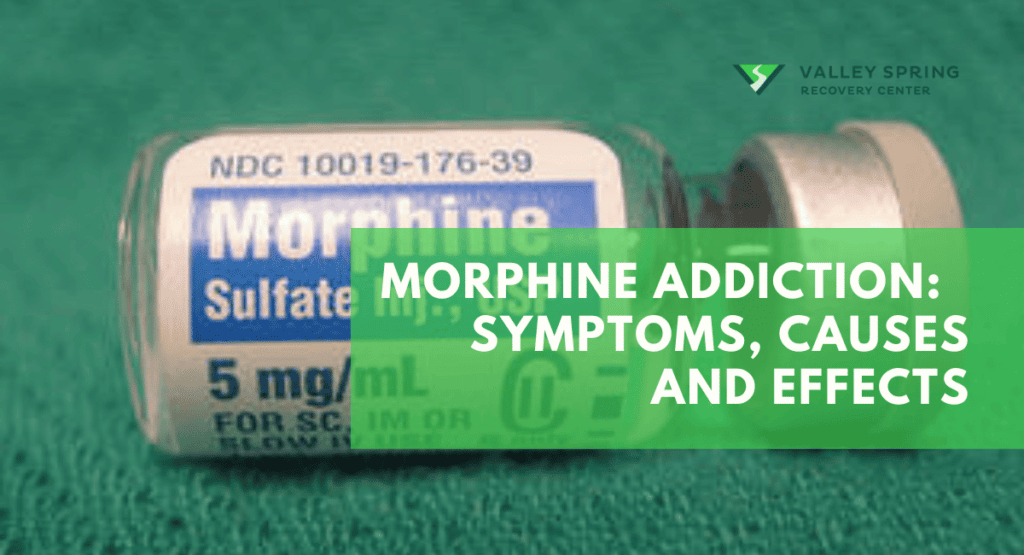Vyvanse (active ingredient: lisdexamfetamine) is a prescription stimulant medication that is in the same drug class as Adderall and is primarily used for the treatment of attention deficit hyperactivity disorder (ADHD) and binge eating disorder. Vyvanse can be a very helpful medication for treating ADHD adults treated with Vyvanse showed twice the ADHD symptom improvement compared to people who were treated with a sugar pill and children showed improvement as well according to the Vyvanse website. However, Vyvanse, like other stimulants, can be addictive when misused.
The symptoms of Vyvanse addiction can include impaired control over drug use, social and occupational impairment, continued use despite negative consequences, and the development of tolerance and withdrawal symptoms.
The causes of Vyvanse addiction can be attributed to a combination of factors including genetic predisposition, underlying mental health conditions, environmental influences, and patterns of drug misuse or abuse.
The effects of Vyvanse addiction can include physical health problems, psychological distress, impaired social and occupational functioning, strained relationships, financial difficulties, and an increased risk of accidents or legal issues.
What is Vyvanse Addiction?
Vyvanse addiction is a condition in which an individual becomes physically and psychologically dependent on the drug. This addiction can manifest as a compulsive need to take Vyvanse, despite negative consequences and the desire to stop or reduce its use.
Vyvanse addiction can have various negative consequences for an individual’s physical and mental health, relationships, work or school performance, and overall well-being. Misuse of Vyvanse can involve taking higher doses than prescribed, using it without medical necessity, or using it in different ways (such as crushing and snorting the medication) to enhance its effects.
Vyvanse abuse and addiction have been a cause for concern for years. SAMHSA’s National Survey on Drug Use and Health (NSDUH) reported that in 2019, an estimated 5.0 million people aged 12 or older misused prescription stimulants like Vyvanse in the past year. This includes non-medical use, misuse, or abuse of prescription stimulants.
Why Do People Consume Vyvanse?
People consume Vyvanse for various reasons. The primary and appropriate use of Vyvanse is for the treatment of attention deficit hyperactivity disorder (ADHD) in children, adolescents, and adults. It helps improve attention, focus, and impulse control and reduces hyperactivity in individuals with ADHD. Vyvanse is also approved for the treatment of moderate to severe binge eating disorder.
However, there are instances where people may misuse or abuse Vyvanse for non-medical purposes. Some individuals may misuse Vyvanse or other stimulant medications believing that they can enhance their cognitive abilities, such as improving concentration, productivity, and academic or work performance.
Others may misuse it for its potential weight loss effects or to experience feelings of increased energy and euphoria. Peer pressure, lack of awareness about the risks, and misconceptions about Vyvanse can also contribute to its non-medical use.
How to quit Vyvanse?
Quitting Vyvanse should be done cautiously and under medical supervision. Here’s a step-by-step guide:
- Consult with Your Healthcare Provider: The first and most crucial step is to talk to the doctor who prescribed Vyvanse. They can assess your situation and create a safe plan for tapering off the medication. Abruptly stopping Vyvanse can lead to withdrawal symptoms and potential health risks.
- Develop a Tapering Schedule: Your doctor will likely recommend gradually reducing the dosage of Vyvanse to minimize withdrawal symptoms. This process needs to be tailored to your specific health needs and may vary in duration.
- Monitor for Withdrawal Symptoms: As you taper off Vyvanse, be aware of withdrawal symptoms like fatigue, depression, changes in appetite, or sleep disturbances. Regular check-ins with your healthcare provider are important to manage these symptoms effectively.
- Seek Support: Consider counseling or therapy during this transition. Mental health professionals can provide support and strategies for coping with withdrawal symptoms and underlying conditions like ADHD.
- Adopt a Healthy Lifestyle: Engage in regular exercise, maintain a balanced diet, and ensure adequate sleep. These lifestyle choices can help manage withdrawal symptoms and improve overall well-being.
- Prepare for Psychological Adjustments: If you were taking Vyvanse for ADHD, prepare for the return of ADHD symptoms as you reduce the medication. Work with your healthcare provider to explore alternative treatments or strategies.
- Avoid Self-Medication: Do not attempt to use other substances to manage withdrawal symptoms. This can lead to further complications and hinder the withdrawal process.
- Stay Informed and Follow-Up: Educate yourself about the process and maintain regular follow-ups with your healthcare provider to adjust the plan as needed.
It’s important to note that only a healthcare provider can prescribe Vyvanse, and it should be taken exactly as prescribed. If you have questions about your medication or suspect you have the wrong medication, contact your pharmacist or healthcare provider immediately for clarification.
Remember, the process of quitting Vyvanse varies from person to person, and it’s essential to follow a plan that’s specifically designed for you by a healthcare professional. In most cases, stopping Vyvanse does not require medical detox or residential treatment because the addiction symptoms are not as severe as opiates or other drugs, however, Vyvanse can be addicting and if taken consistently in high doses, addiction treatment may be appropriate.
What is treatment like for Vyvanse addiction if you can’t stop on your own?
The treatment options for Vyvanse addiction typically involve a combination of behavioral interventions, counseling, support groups, and, in some cases, medication-assisted treatment. The primary goal of treatment is to help individuals overcome their addiction, manage withdrawal symptoms, address underlying issues, and develop healthy coping mechanisms. Here are some common treatment options:
1. Detoxification
The first step in treating Vyvanse addiction is often detoxification, which involves clearing the body of the drug while managing withdrawal symptoms. Medical supervision and support may be necessary during this process to ensure safety and comfort, particularly if polysubstance use disorder is present. This means, if Vyvanse is being taken in conjunction with other addictive drugs, medical detox will be necessary.
2. Behavioral therapy
Various forms of behavioral therapy can be effective in treating Vyvanse addiction. Cognitive-behavioral therapy (CBT) helps individuals identify and change negative thought patterns and behaviors associated with drug use. Contingency management uses positive reinforcement to encourage drug-free behaviors. Motivational interviewing helps individuals strengthen their motivation to change and commit to recovery.
3. Support groups
Joining support groups, such as 12-step programs like Narcotics Anonymous (NA) or SMART Recovery, can be highly beneficial. These groups provide a supportive community of individuals facing similar challenges, offering guidance, encouragement, and accountability.
4. Individual counseling
One-on-one counseling sessions with a qualified therapist or addiction counselor can provide a safe space to explore underlying issues contributing to addiction. It can also help individuals develop strategies for relapse prevention, stress management, and healthy coping skills.
5. Medication-assisted treatment (MAT)
In some cases, medication may be used to assist in the treatment of Vyvanse addiction. Certain medications, such as bupropion or modafinil, may be prescribed to address withdrawal symptoms, manage cravings, or stabilize mood during the recovery process. However, the use of medication should be determined by a healthcare professional based on individual needs and considerations.
6. Dual diagnosis treatment
If an individual has co-occurring mental health disorders, such as depression or anxiety, it’s crucial to address both the addiction and the mental health condition simultaneously. Integrated treatment that targets both conditions is typically the most effective approach.
7. Aftercare and relapse prevention
Developing a comprehensive aftercare plan is essential for maintaining long-term recovery. This may include ongoing therapy, participation in support groups, regular check-ins with a healthcare professional, and implementing healthy lifestyle changes to support sobriety.
It’s important to note that the specific treatment approach may vary depending on individual circumstances, the severity of the addiction, and any co-occurring conditions. Seeking professional help from addiction specialists, therapists, or treatment centers experienced in substance use disorders is highly recommended for an individualized approach to Vyvanse addiction treatment.
What are the Signs and Symptoms of Vyvanse Addiction?
The signs and symptoms of Vyvanse addiction can vary from person to person, but there are common indicators to watch for. If you suspect someone may be struggling with Vyvanse addiction, look for the following signs:
1. Increased Drug Tolerance
Drug tolerance is one of the early stages of the addiction addiction cycle. Over time, as people continue to abuse the drug, the body and mind begin to adapt to the effects gotten from low dosage. When this happens, they may need higher doses of Vyvanse to achieve the desired effects. They may escalate their dosage without medical guidance or take it more frequently than prescribed.
2. Compulsive drug use (Dependence)
Individuals with Vyvanse addiction may find it challenging to control or stop their drug use. They may express a strong urge or compulsion to use Vyvanse, even when they want to quit or cut down. This is because their body and mind have become dependent on the drug, so much that they need it to function normally.
3. Withdrawal symptoms
When someone is physically dependent on Vyvanse, they may experience withdrawal symptoms when they try to reduce or stop using it. These symptoms can include fatigue, depression, irritability, anxiety, increased appetite, and intense cravings for the drug.
4. Neglecting responsibilities
Vyvanse addiction can lead to a decline in performance at work, school, or other areas of life. The individual may neglect their responsibilities, miss deadlines, or experience difficulties maintaining relationships due to their drug use. They may take unnecessary breaks from work, school, parenting, and other daily tasks just to use the drug.
5. Changes in behavior and mood
Behavioral changes are common in everyone who is addicted to drug use. Vyvanse addiction can cause noticeable changes in behavior and mood. The individual may become more secretive, defensive, or exhibit erratic behavior. They may also exhibit behavioral problems mood swings, agitation, restlessness, or irritability.
6. Social withdrawal
Individuals with Vyvanse addiction may withdraw from social activities, hobbies, or relationships they once enjoyed. They may isolate themselves to hide their drug use or due to the negative impact it has on their social interactions. They may also intentionally avoid going places they used to go to avoid the shame and stigma associated with addiction.
7. Financial difficulties
Like most illicit drugs, Vyvanse addiction can be costly, especially when obtained illicitly or in higher quantities than prescribed. Individuals may face financial problems or have significant and unexplained expenses related to obtaining Vyvanse.
8. Physical and health changes
Prolonged Vyvanse abuse can lead to physical and health changes. These can include weight loss, sleep disturbances, increased heart rate, elevated blood pressure, gastrointestinal issues, and overall deterioration in physical appearance and well-being.
You may also notice some of the following symptoms:
- Doctor shopping or seeking multiple prescriptions
- Engaging in deceptive or illegal activities to obtain Vyvanse
- Failed attempts to cut down or quit using Vyvanse
- Spending a significant amount of time obtaining, using, or recovering from Vyvanse
- Neglecting personal hygiene or appearance
- Lying or being dishonest about Vyvanse use
- Using Vyvanse in risky situations, such as while driving or operating machinery
- Developing psychological issues, such as anxiety or depression, as a result of Vyvanse use.
Note that the presence of these signs and symptoms does not necessarily guarantee Vyvanse addiction. However, if you observe these signs in yourself or someone you know, it is recommended to seek professional help from healthcare providers or addiction specialists who can assess the situation and provide appropriate guidance and support.
Why do people get addicted to prescription stimulants?
People often develop an addiction to prescription stimulants due to their potent effects on the brain’s reward system. These medications, typically prescribed for conditions like ADHD or narcolepsy, increase dopamine levels in the brain. Dopamine is a neurotransmitter associated with pleasure, movement, and attention. When used as prescribed, these stimulants help manage symptoms effectively. However, misuse can lead to a euphoric sensation, often described as a ‘high’, which can be habit-forming.
Data suggests that the misuse of prescription stimulants is rising. The National Institute on Drug Abuse (NIDA) reports that in 2020, approximately 5.1 million people in the United States aged 12 or older misused prescription stimulants in the past year. This misuse can lead to dependence and addiction, as the brain begins to rely on the drug to stimulate dopamine production.
Moreover, people might misuse prescription stimulants to enhance cognitive performance, stay awake, or lose weight. These motivations, combined with the drug’s addictive potential, create a high risk for developing an addiction. It’s crucial to use these medications only as prescribed and be aware of the signs of misuse and addiction. Early intervention and treatment are key to preventing the escalation of stimulant misuse into a full-blown addiction.
What are the Effects of Vyvanse Addiction?
Vyvanse addiction can have a range of effects, impacting various aspects of an individual’s life. These effects can be physical, psychological, and social, and may extend to other areas. Here are some common effects of Vyvanse addiction:
1. Physical Effects
- Increased heart rate and blood pressure
- Irregular heartbeat or palpitations
- Appetite suppression leading to weight loss and malnutrition
- Sleep disturbances or insomnia
- Gastrointestinal issues such as stomach pain, constipation, or diarrhea
- Headaches or migraines
- Increased risk of cardiovascular problems
2. Psychological Effects
- Intense cravings for Vyvanse
- Irritability, agitation, or mood swings
- Anxiety or panic attacks
- Paranoia or hallucinations in severe cases
- Depression or dysphoria during periods of withdrawal or when not using Vyvanse
- Impaired cognitive function, including difficulties with memory, concentration, and problem-solving
3. Social and Interpersonal Effects
- Strained relationships with family, friends, or significant others due to changes in behavior, secrecy, or dishonesty
- Social withdrawal or isolation, prioritizing drug use over social activities
- Neglecting responsibilities at work, school, or home, leading to academic or occupational problems
- Financial difficulties due to excessive spending on Vyvanse or legal issues related to obtaining the drug illicitly
- Increased risk-taking behaviors or engaging in illegal activities to obtain Vyvanse
4. Health Consequences
- Increased susceptibility to infections and illnesses due to weakened immune system functioning
- Nutritional deficiencies and weakened overall physical health
- Long-term cardiovascular complications, including heart disease or stroke
- Worsening of pre-existing mental health conditions or the development of new mental health disorders
- Increased risk of accidents or injuries due to impaired judgment, coordination, or risky behaviors while under the influence of Vyvanse
5. Legal and Financial Consequences
- Legal repercussions if caught possessing or obtaining Vyvanse without a prescription
- Financial strain due to the cost of acquiring Vyvanse illicitly or the consequences of neglecting financial responsibilities
It is crucial to recognize that the effects of Vyvanse addiction can vary among individuals and may depend on factors such as the duration and severity of the addiction, individual health, and other co-occurring conditions.
How Does Vyvanse Affect The Brain?
Vyvanse affects the brain by targeting and modifying the activity of certain neurotransmitters, which are chemical messengers that help transmit signals between brain cells. The active ingredient in Vyvanse is lisdexamfetamine, which is a prodrug that gets converted into dextroamphetamine in the body. Dextroamphetamine is a central nervous system stimulant that primarily affects the levels of dopamine and norepinephrine in the brain.
1. Dopamine
Vyvanse increases the release and blocks the reuptake of dopamine, resulting in increased dopamine levels in the brain. Dopamine is involved in regulating motivation, reward, pleasure, and attention. By increasing dopamine levels, Vyvanse enhances the signaling within the reward pathway, leading to feelings of pleasure, improved focus, and increased motivation.
2. Norepinephrine
Vyvanse also affects the levels of norepinephrine, another neurotransmitter involved in attention, focus, and arousal. By increasing norepinephrine levels, Vyvanse enhances alertness and vigilance.
The combination of increased dopamine and norepinephrine levels in the brain leads to the therapeutic effects of Vyvanse on attention, focus, impulse control, and reducing hyperactivity in individuals with ADHD.
While Vyvanse can be beneficial for individuals with ADHD when used as prescribed, misusing or abusing Vyvanse can have significant effects on the brain and overall health. Misuse can lead to overstimulation of the brain’s reward system, which can result in a cascade of effects, including increased tolerance, dependence, and potential addiction.
Additionally, long-term or excessive use of Vyvanse can disrupt the natural balance of neurotransmitters in the brain, potentially leading to changes in brain structure and function.
What is the Difference Between Vyvanse and Adderall?
Vyvanse (lisdexamfetamine) and Adderall (amphetamine/dextroamphetamine) are both medications commonly used to treat attention deficit hyperactivity disorder (ADHD) and narcolepsy. While they are both stimulant medications with similar therapeutic effects, there are some differences between the two:
- Chemical Composition: Vyvanse contains lisdexamfetamine, which is a prodrug that gets converted into dextroamphetamine in the body. Adderall, on the other hand, is a combination medication that contains equal parts of amphetamine and dextroamphetamine.
- Duration of Action: Vyvanse is formulated as a prodrug with a longer duration of action compared to immediate-release forms of Adderall. Vyvanse is designed to provide a gradual and sustained release of dextroamphetamine throughout the day, typically lasting up to 10-14 hours. Adderall is available in both immediate-release and extended-release formulations, with the immediate-release version typically lasting around 4-6 hours, and the extended-release version lasting up to 12 hours.
- Onset of Action: Vyvanse has a delayed onset of action, typically taking about 1 to 2 hours for the effects to be noticeable. Adderall, especially the immediate-release form, may have a faster onset of action, with effects felt within 30 to 60 minutes after ingestion.
- Abuse Potential: Vyvanse is considered to have a lower abuse potential compared to Adderall. This is because the prodrug form of lisdexamfetamine requires enzymatic breakdown in the body to become active, making it less prone to immediate and intense effects if misused. Adderall, particularly the immediate-release form, has a higher risk of misuse and is classified as a Schedule II controlled substance due to its abuse potential.
- FDA-Approved Uses: Vyvanse is approved by the U.S. Food and Drug Administration (FDA) for the treatment of ADHD in both children (6 years and older) and adults, as well as for moderate to severe binge eating disorders. Adderall is also approved for treating ADHD in children (3 years and older) and adults, and it is also indicated for the treatment of narcolepsy.
Are the effects of a Vyvanse high similar to that of a cocaine high?
Vyvanse (lisdexamfetamine) and cocaine are both central nervous system stimulants, but they have different pharmacological profiles and are used in very different contexts. Vyvanse is a prescription medication designed for the treatment of Attention Deficit Hyperactivity Disorder (ADHD) and is formulated to provide a gradual, controlled release of the drug. Cocaine, on the other hand, is an illegal and highly addictive substance known for its immediate and intense effects.
Despite their differences, both substances can produce some similar effects due to their stimulant properties, especially when taken in high doses or abused.
What does Vyvanse look like?
The appearance of Vyvanse can vary depending on the dosage. Here’s a general description:
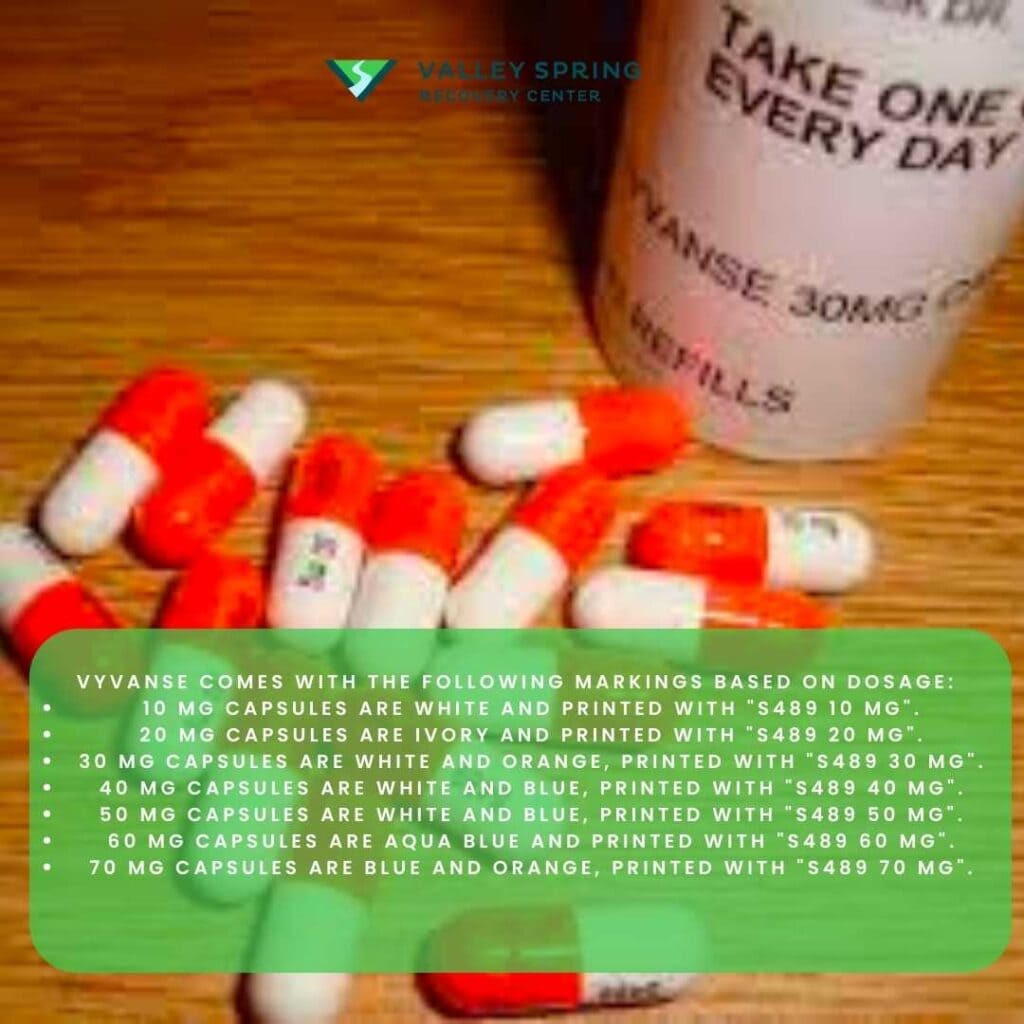
- Capsules:
- Vyvanse capsules are typically colored and have the dosage strength printed on them.
- They come in several strengths, indicated by different colors and imprints. For example:
- 10 mg capsules are white and printed with “S489 10 mg”.
- 20 mg capsules are ivory and printed with “S489 20 mg”.
- 30 mg capsules are white and orange, printed with “S489 30 mg”.
- 40 mg capsules are white and blue, printed with “S489 40 mg”.
- 50 mg capsules are white and blue, printed with “S489 50 mg”.
- 60 mg capsules are aqua blue and printed with “S489 60 mg”.
- 70 mg capsules are blue and orange, printed with “S489 70 mg”.
- Chewable Tablets:
- The chewable tablets are usually round and white.
- They also come in various strengths and have the dosage strength imprinted on one side.
How is Vyvanse Addiction Diagnosed?
The diagnosis of Vyvanse addiction, formally known as stimulant use disorder, is typically made by a healthcare professional or addiction specialist based on diagnostic criteria outlined in the Diagnostic and Statistical Manual of Mental Disorders (DSM-5). To diagnose Vyvanse addiction, the following criteria are considered:
- Impaired control
- Social impairment
- Risky use, and
- Pharmacological criteria.
These criteria assess factors such as the individual’s inability to control Vyvanse use, the negative impact on their social and occupational functioning, the persistence of use despite knowledge of harm, and the development of tolerance or withdrawal symptoms. The severity of the addiction can be classified as mild, moderate, or severe based on the number of criteria met within a specific timeframe.
Is Vyvanse OK for long-term use?
Vyvanse can be used for long-term treatment under the supervision of a healthcare professional, as it is a long-term treatment designed to protect against abuse. It is important to regularly assess the need for continued use, monitor effectiveness, and manage potential side effects. The duration of treatment with Vyvanse should be determined on an individual basis, taking into consideration the specific needs and responses of the person using it.
What to Avoid When Taking Vyvanse
When taking Vyvanse, it is generally advised to avoid the following:
- Alcohol: Drinking alcohol while taking Vyvanse can increase the risk of adverse effects and may impair judgment and coordination.
- Caffeine: Excessive caffeine intake can amplify the stimulant effects of Vyvanse and potentially lead to increased heart rate, blood pressure, and anxiety.
- Other Stimulant Medications: Concurrent use of other stimulant medications, such as Adderall or Ritalin, with Vyvanse, can increase the risk of side effects and excessive stimulation.
- MAOIs: Monoamine oxidase inhibitors (MAOIs), a type of antidepressant, should not be taken with Vyvanse. Combining the two can lead to a potentially dangerous increase in blood pressure.
- Certain Medications: Inform your healthcare provider about all medications you are taking, including prescription, over-the-counter, and herbal supplements, as some medications may interact with Vyvanse.
- Grapefruit: Grapefruit and grapefruit juice can interact with Vyvanse and affect its metabolism in the body. It is advisable to avoid consuming grapefruit products while taking Vyvanse.
It is essential to follow the guidance of your healthcare provider and read the medication label for specific instructions and warnings. They can provide personalized advice on what to avoid while taking Vyvanse based on your circumstances.
Dr. Michael Olla
All author postsShare This Post

